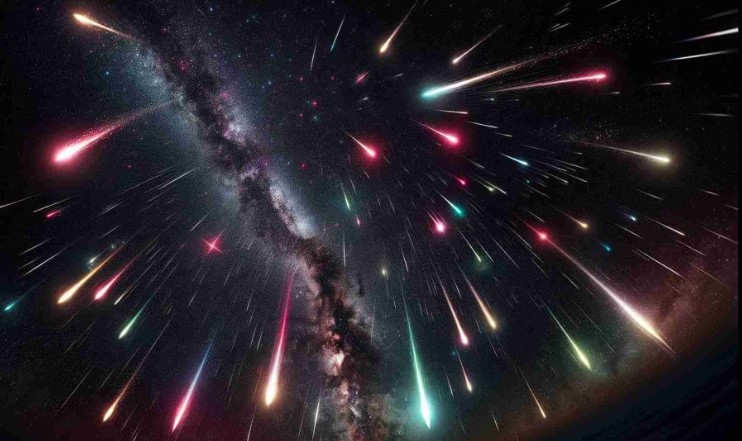Tuesday’s new moon has cast a dim canvas across the heavens, setting the stage for one of the year’s most dazzling meteor showers to illuminate the night sky even more vibrantly. The Geminid meteor shower, an annual celestial event, is poised to reach its zenith at approximately 19:00 GMT on Thursday, with intermittent displays continuing until December 24. This meteor shower stands out among the estimated 30 annual showers visible from Earth due to its unique origin and formation.
The Geminid meteor shower derives its name from the constellation “Gemini” and occurs every December. What sets it apart is that, unlike the majority of meteor showers formed by comet debris, the Geminids are born from the remnants of asteroids. In particular, the source of these meteors was identified as an asteroid named 3200 Phaethon, discovered in the mid-1980s, with the shower’s inaugural observation recorded back in 1862.
This celestial spectacle is forecasted to peak at 19:27 GMT on December 14, remaining visible through the pre-dawn hours. The optimal viewing window is between midnight and 2 am local time in any time zone, according to The Planetary Society, with the absence of moonlight during the new moon enhancing the luminosity of the meteor shower.

While skywatchers across the globe can witness the event, the Northern Hemisphere is expected to experience the most spectacular displays, while the Southern Hemisphere may observe fewer meteors. Clearer skies will further enhance visibility, emphasizing the importance of seeking locations away from light pollution for an optimal viewing experience.
For those unable to witness the Geminid meteor shower in person, telescope networks such as the Slooh robotic telescope network and the Virtual Telescope Project will be broadcasting the event on their YouTube channels starting at 22:30 GMT and 23:00 GMT respectively on Thursday.
NASA advises that it takes approximately 30 minutes for the eyes to adapt to the darkness, enhancing the clarity of meteor sightings. The Geminids have the potential to dazzle observers with up to 120 visible meteors per hour, making it the most robust meteor shower of the year, according to NASA.
Traveling at an astonishing speed of 35 km per second (22 miles per second), more than 40 times faster than a speeding bullet, Geminid meteors promise a breathtaking spectacle. Interestingly, scientists note that the intensity of the Geminid shower may be increasing each year, surpassing the 10-20 meteors per hour recorded in the mid-1800s.
Despite appearing to radiate from the Gemini constellation, viewers need not fixate on a specific direction to witness the Geminid shower; it will grace the entire sky. NASA cautions that meteors near the radiant point may be easily missed due to their shorter trails.
These streaks of light, predominantly bright and white, may exhibit varying hues based on the chemical composition of the debris. For instance, nickel can produce a greenish tint, while sodium and nitrogen can result in red or orange hues.
In essence, the Geminid meteor shower promises a celestial display that transcends the ordinary, lighting up the December night sky with its mesmerizing brilliance.
